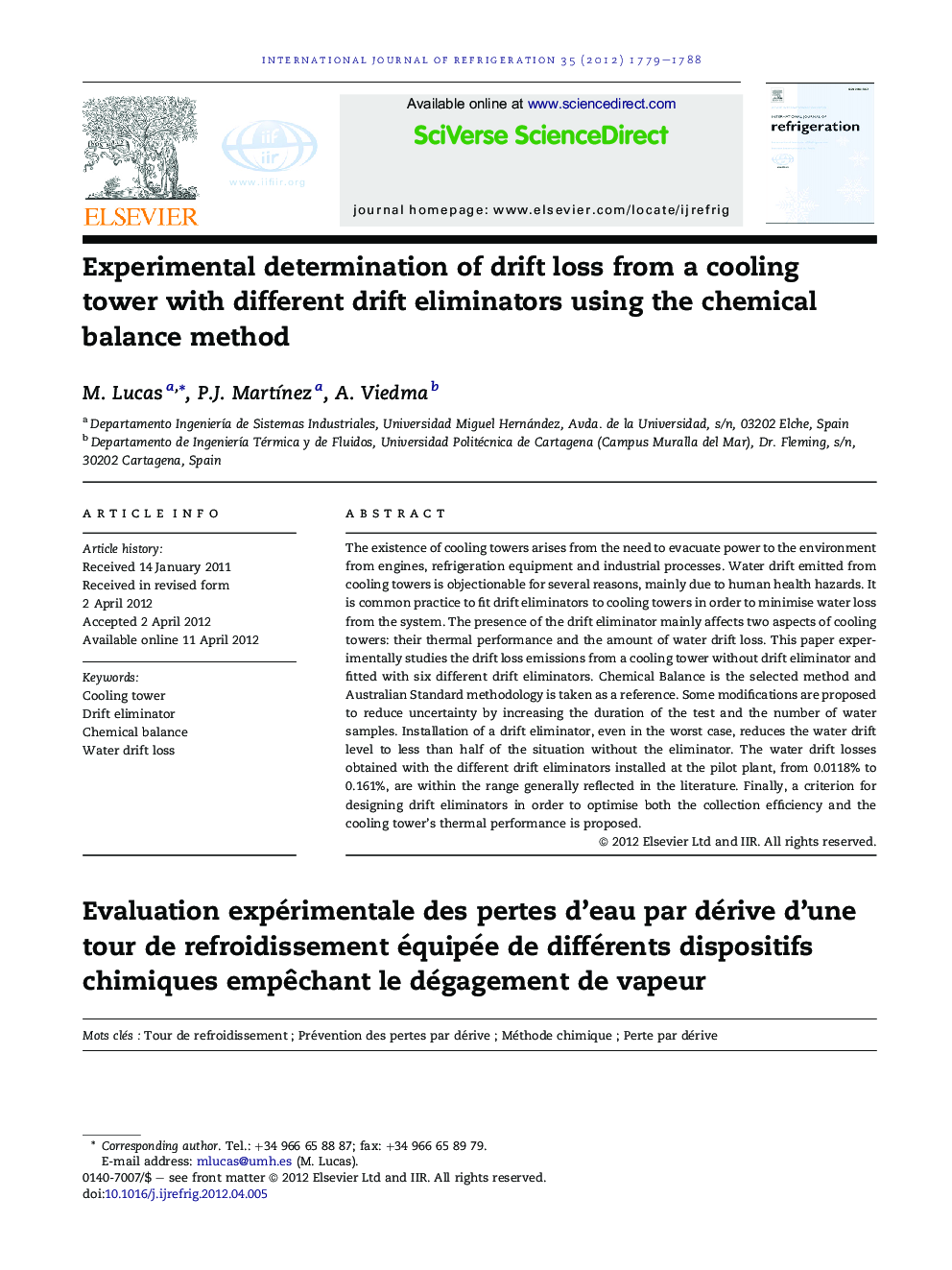| Article ID | Journal | Published Year | Pages | File Type |
|---|---|---|---|---|
| 789506 | International Journal of Refrigeration | 2012 | 10 Pages |
The existence of cooling towers arises from the need to evacuate power to the environment from engines, refrigeration equipment and industrial processes. Water drift emitted from cooling towers is objectionable for several reasons, mainly due to human health hazards. It is common practice to fit drift eliminators to cooling towers in order to minimise water loss from the system. The presence of the drift eliminator mainly affects two aspects of cooling towers: their thermal performance and the amount of water drift loss. This paper experimentally studies the drift loss emissions from a cooling tower without drift eliminator and fitted with six different drift eliminators. Chemical Balance is the selected method and Australian Standard methodology is taken as a reference. Some modifications are proposed to reduce uncertainty by increasing the duration of the test and the number of water samples. Installation of a drift eliminator, even in the worst case, reduces the water drift level to less than half of the situation without the eliminator. The water drift losses obtained with the different drift eliminators installed at the pilot plant, from 0.0118% to 0.161%, are within the range generally reflected in the literature. Finally, a criterion for designing drift eliminators in order to optimise both the collection efficiency and the cooling tower’s thermal performance is proposed.
► A drift eliminator reduces the drift level to less than half of without an eliminator. ► Drift eliminator affects to cooling towers’ thermal performance and drift loss. ► Modifications to Australian Standard methodology are proposed to reduce uncertainty. ► A criterion for designing drift eliminators is proposed.
